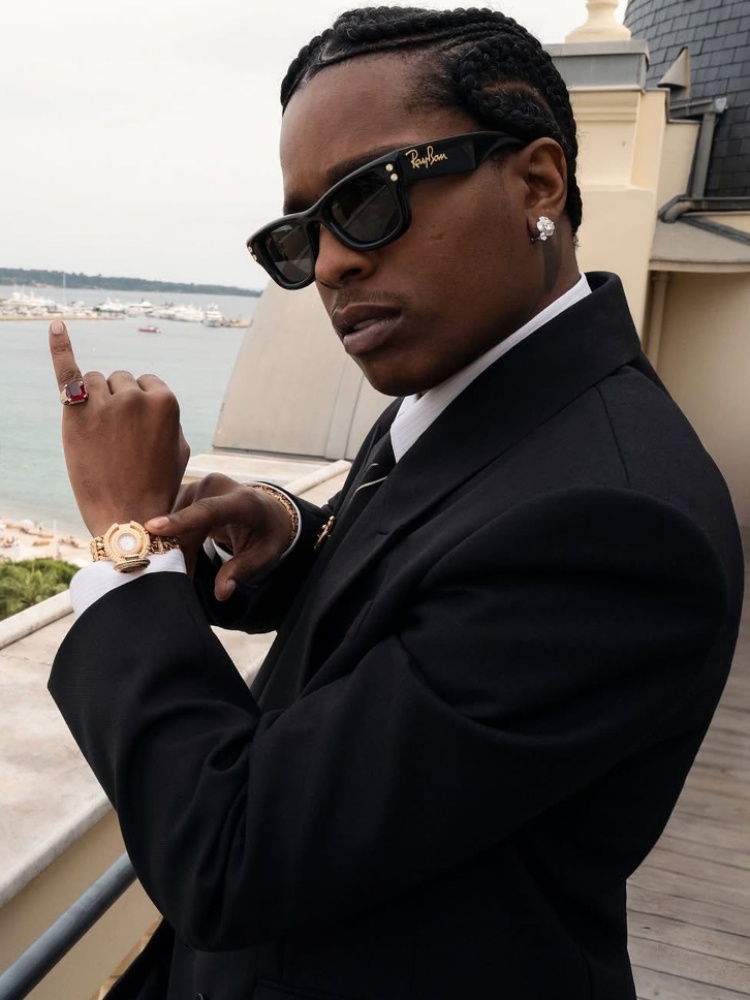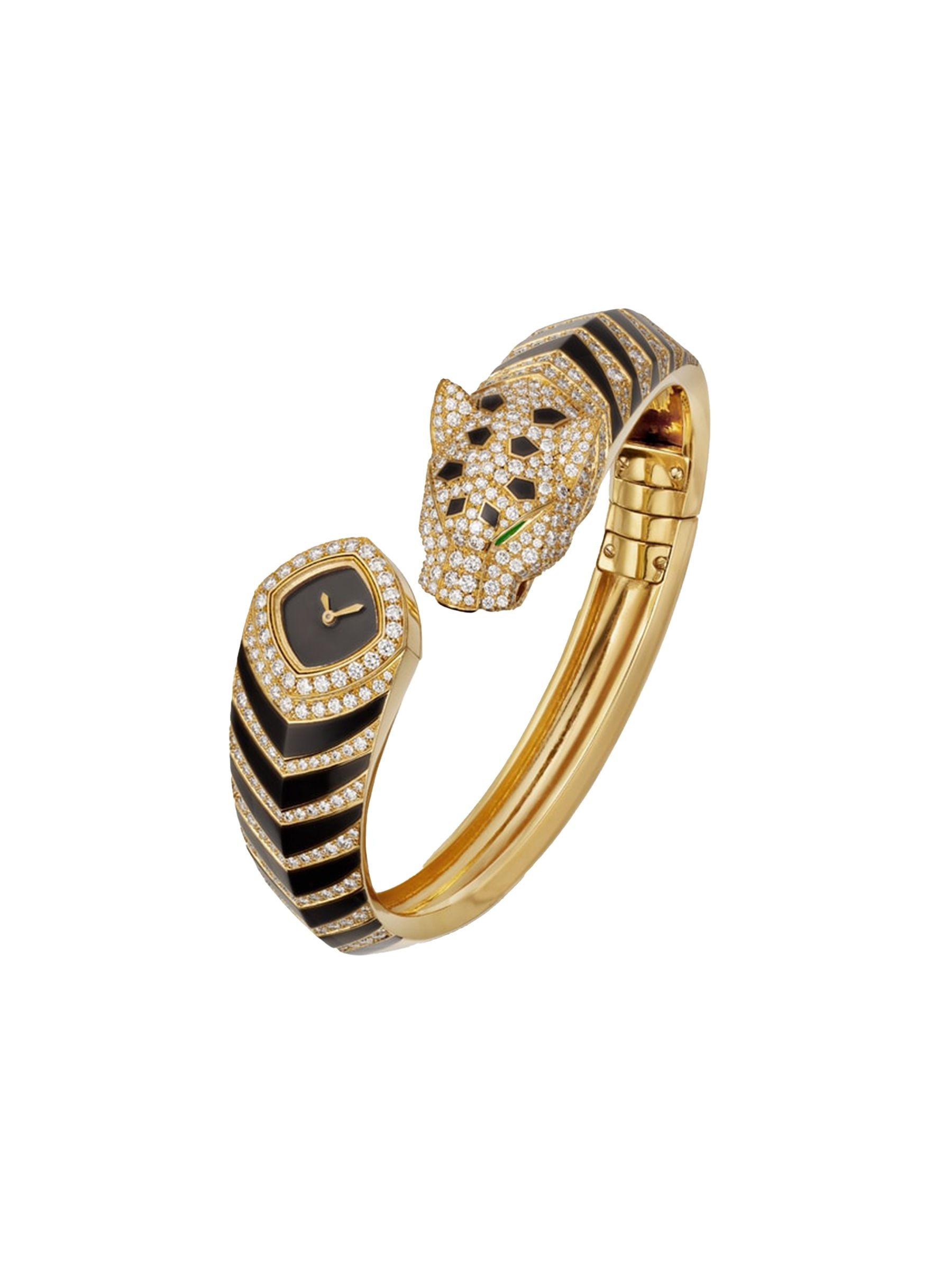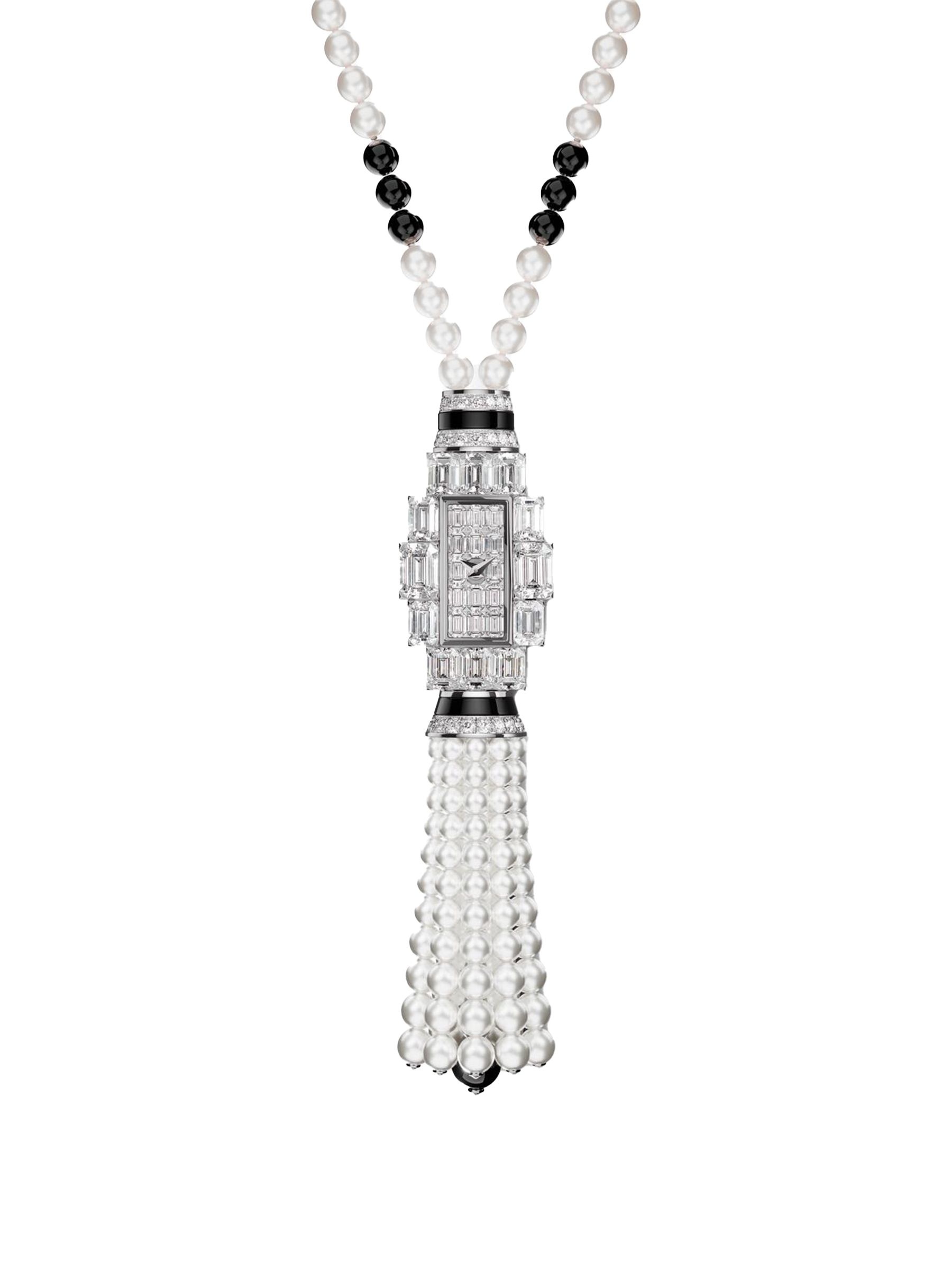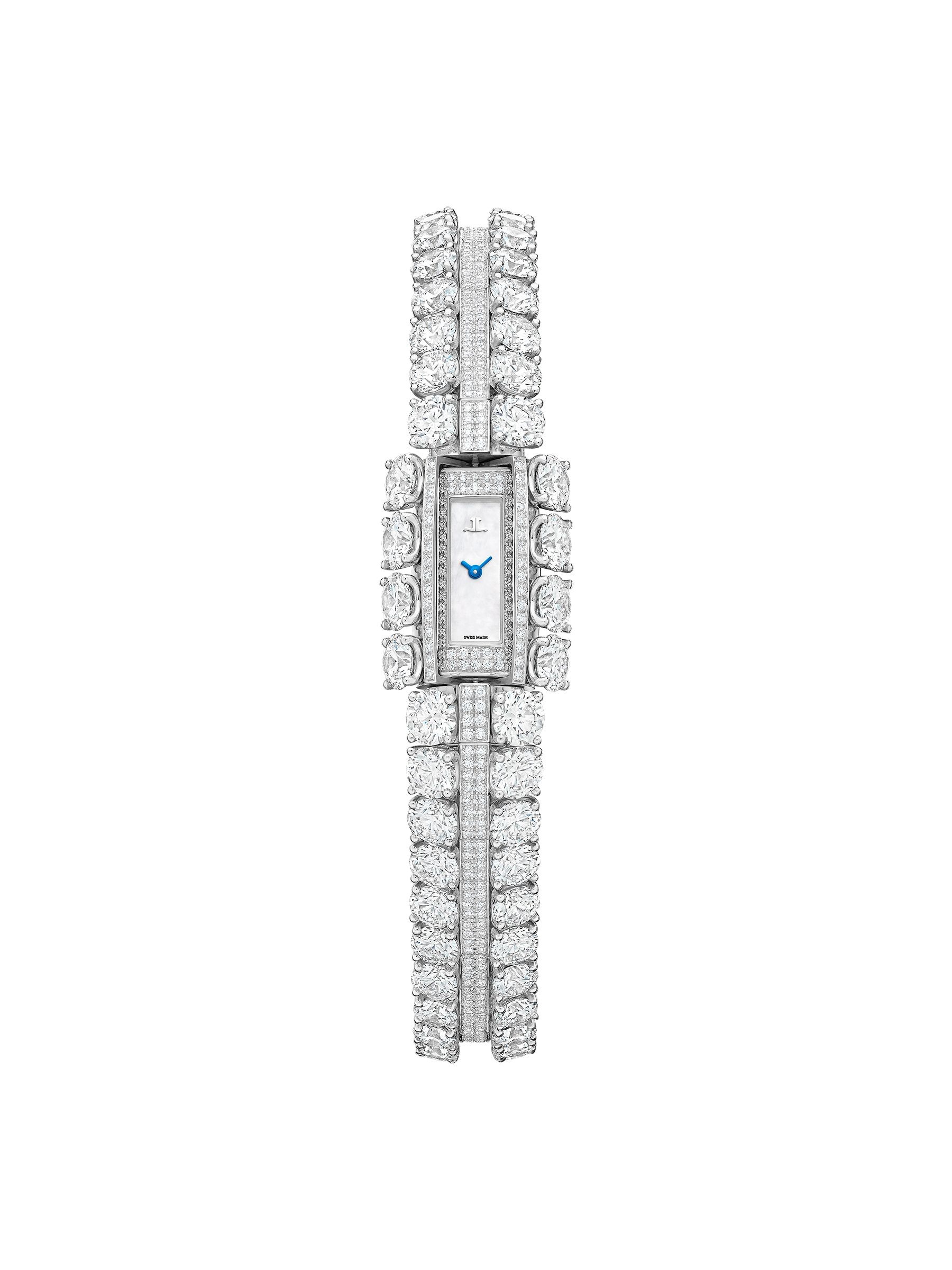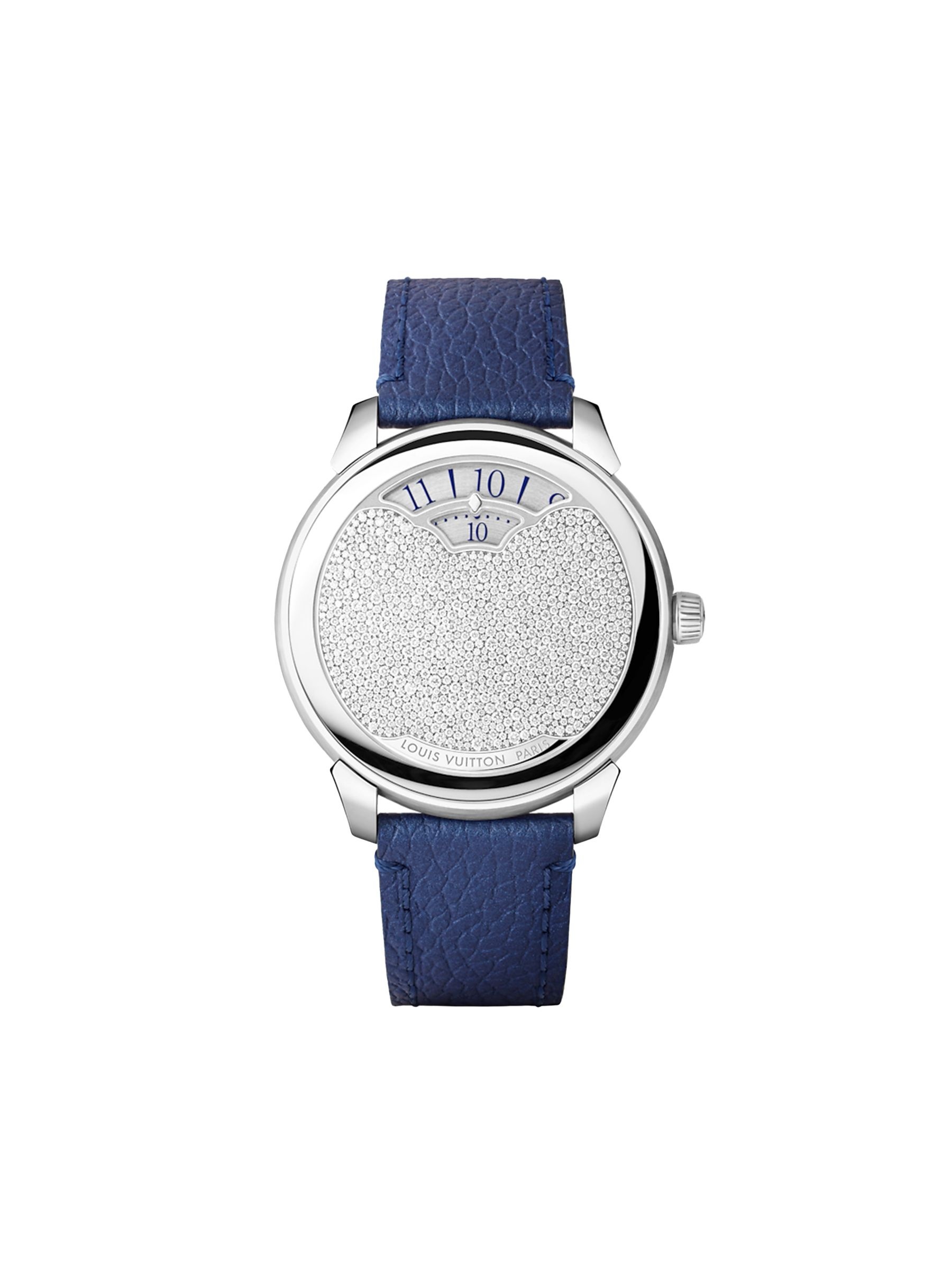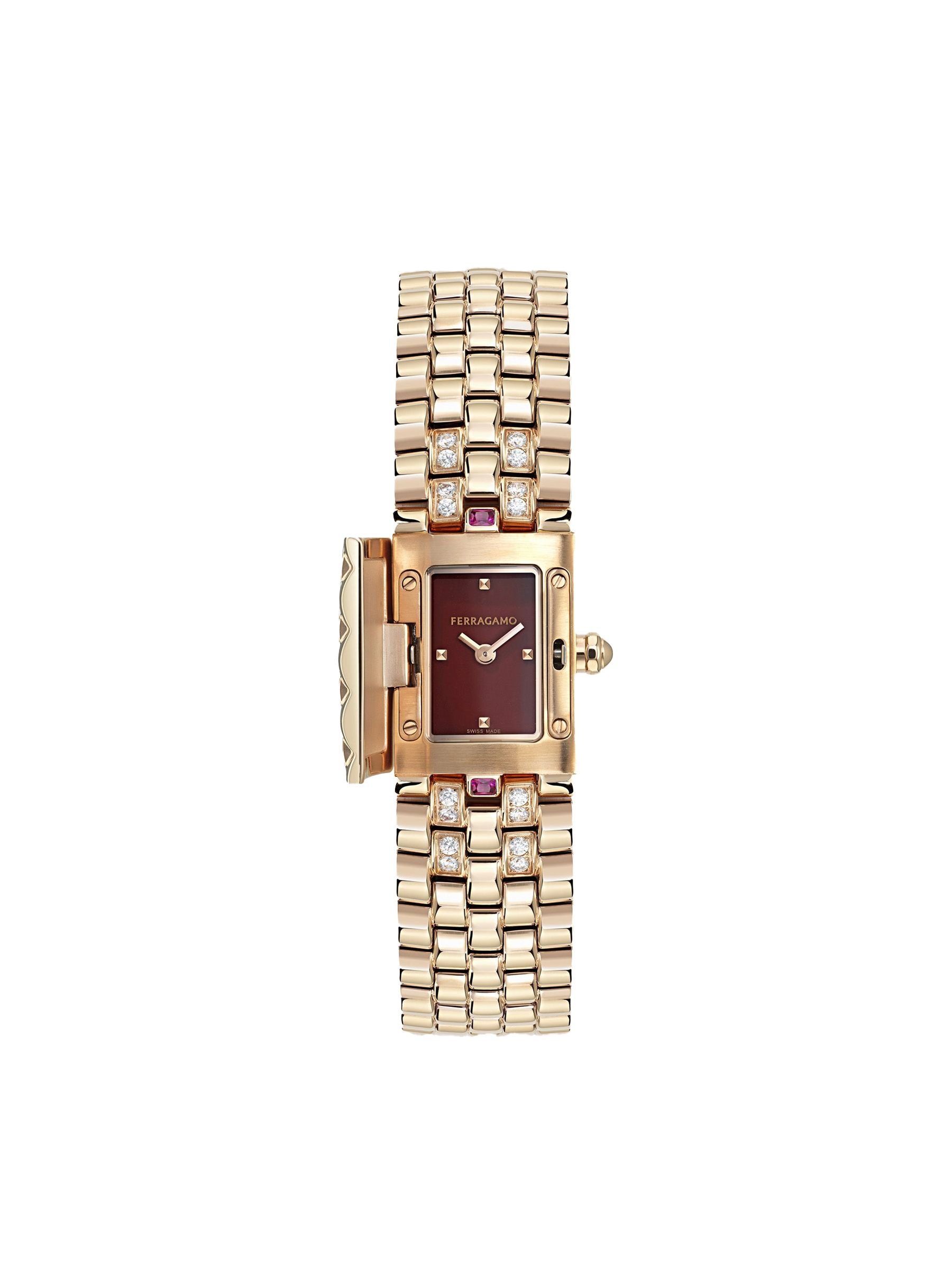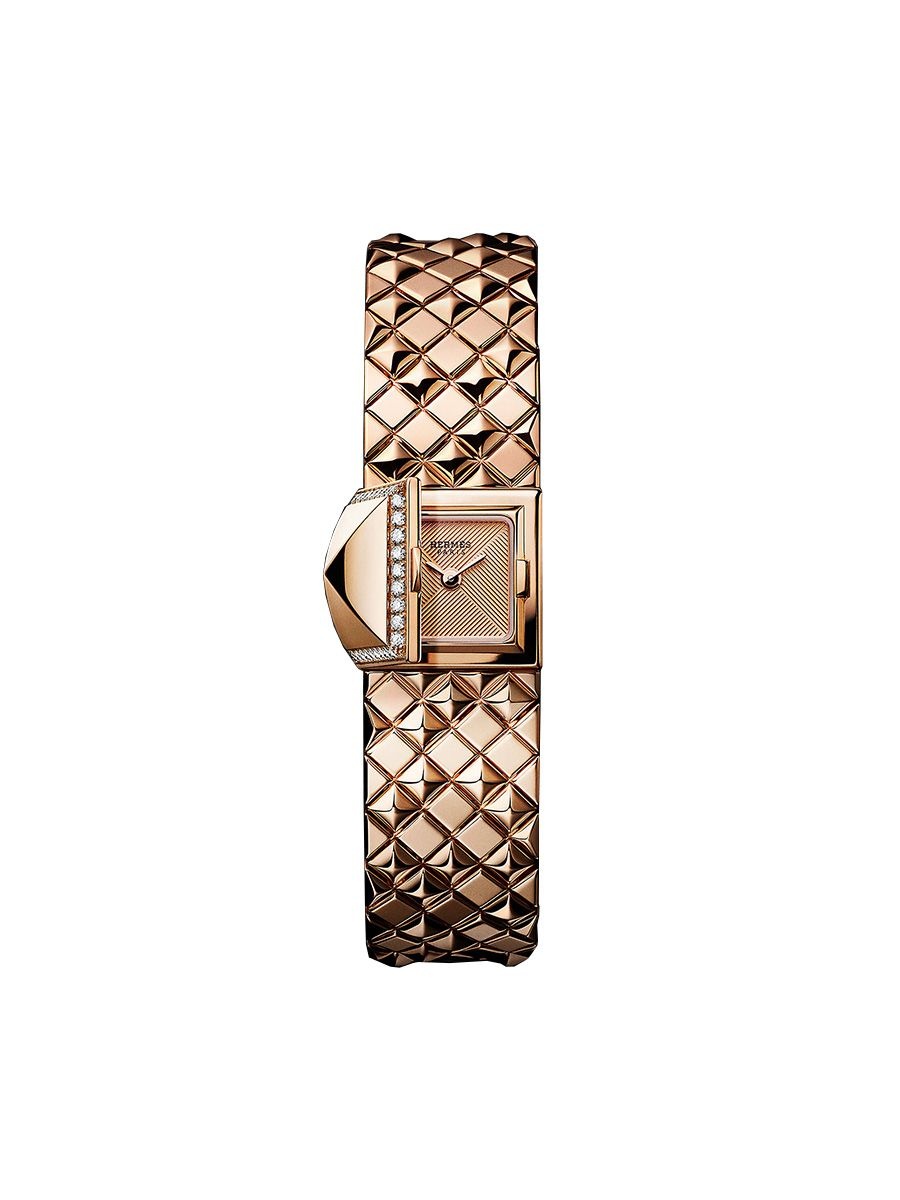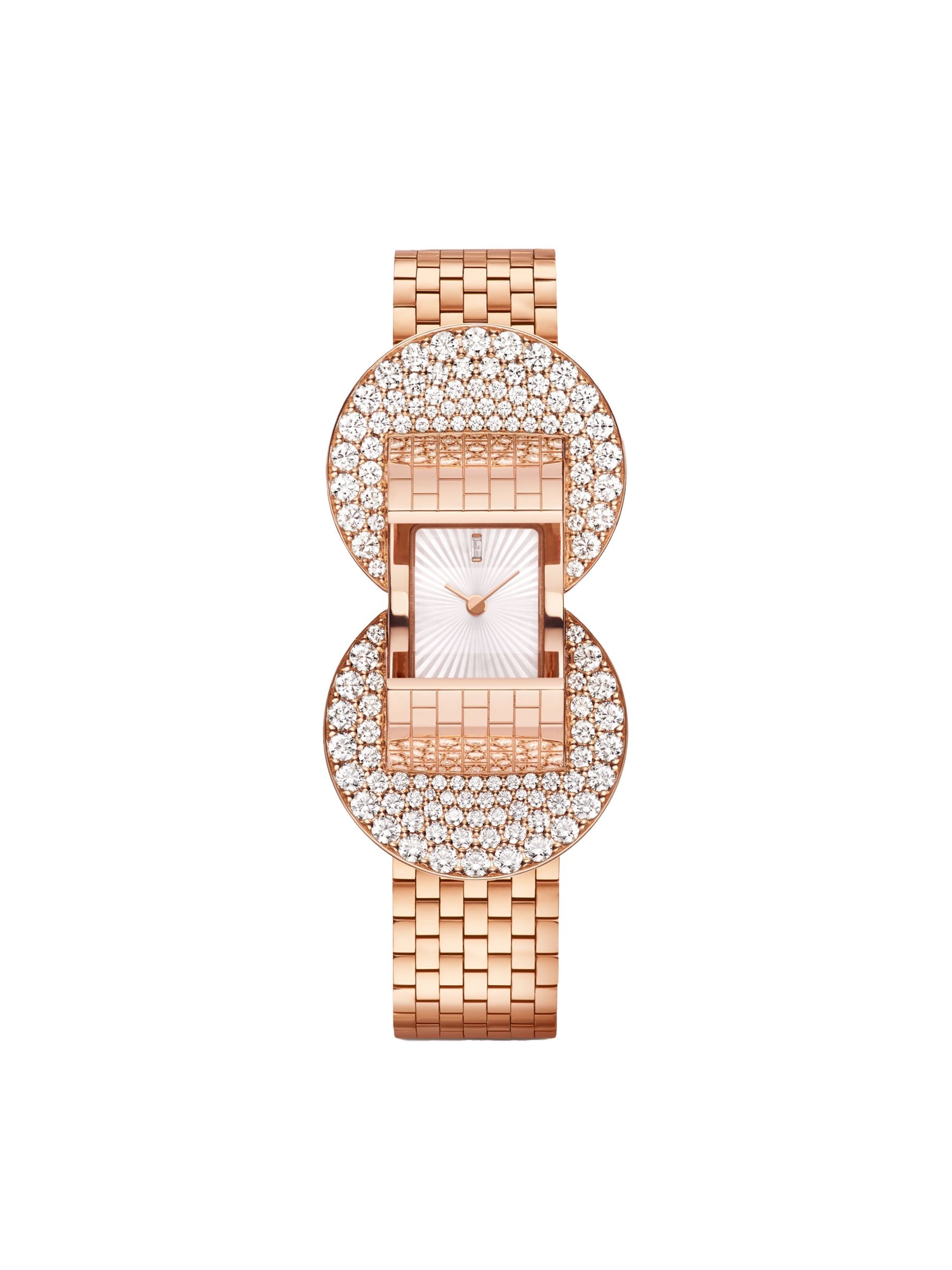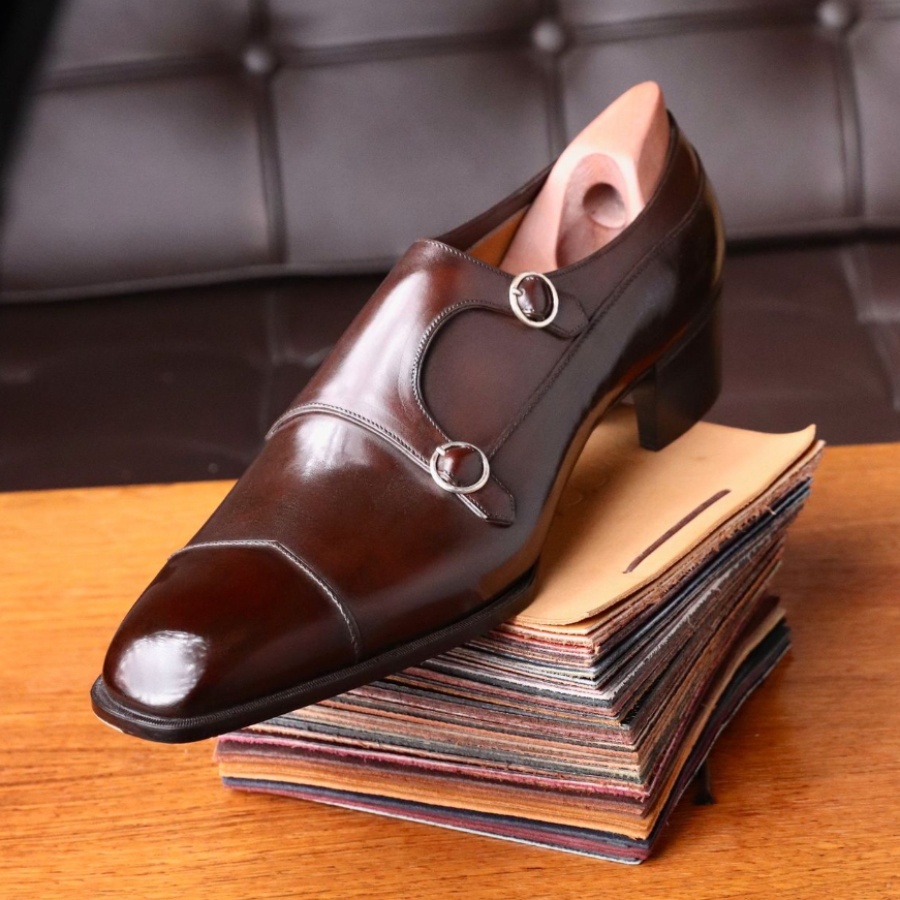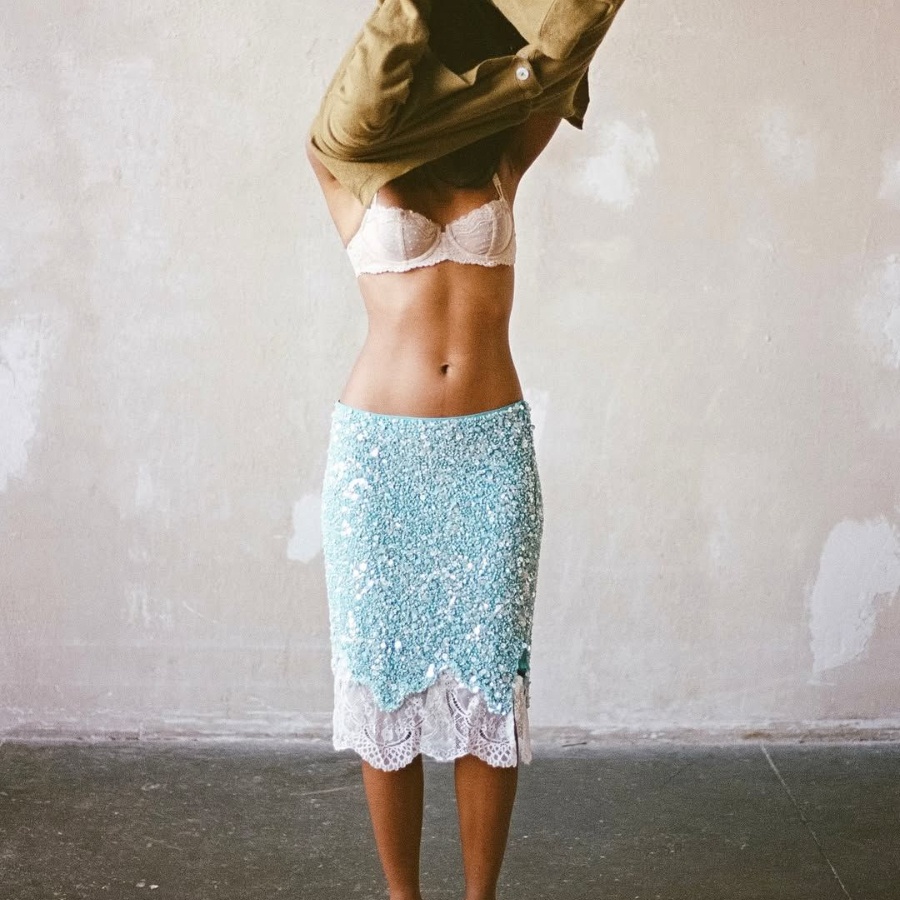There’s something deliciously unserious about a watch that refuses to show you the time. Peekaboo watches—also called secret watches, or Reversos if you’re on a first-name basis with Jaeger-LeCoultre—hide their dials under lids, clasps, or gemstone covers. Once a necessity, now a statement, they’re the kind of accessory that rewards the knowing few.
What sent us down this secret path was Singapore-based entrepreneur and tastemaker Savina Chow’s Instagram. Her wrist-candy trials from The Quest: 270 Years of Seeking Excellence, Vacheron Constantin’s exhibition that recently concluded at Harrods, London, revealed watches that felt more like private winks than public flexes, meticulous and mischievous.
Going back, this May, Bvlgari unveiled the Gioco di Forme e Colori secret watch, a modular piece with a detachable brooch that hides the dial, a two-in-one done right. In September, the Sotheby’s auction in Paris had a few secrets up its sleeve too. On the block were Van Cleef & Arpels, Boucheron, and Piaget designs that blurred the line between bracelet and timepiece. At Watches & Wonders 2025, Chanel sealed the secret with a kiss, unveiling its ‘Kiss Me’ necklace watch, shaped like a black lacquered lipstick case with a hidden dial.
The appeal has clearly spread beyond collectors. A$AP Rocky wore a Bvlgari Monete watch at Cannes this year, a modern riff on the brand’s 1960s coin design. Everyone’s favourite Creature from Frankenstein, Cartier ambassador Jacob Elordi, followed suit wearing the Tank à Guichets, a newly revived design from the 1930s where the dial is only visible through carefully placed narrow slits. After him, Severance actor Tramell Tillman showed up in a Jaeger-LeCoultre Reverso Tribute. Proof that some secrets do, eventually, make it to the red carpet.
Every secret starts somewhere
A peekaboo watch does what few timepieces dare to do: it hides its own face. A lid flips, a clasp slides, and a miniature door opens. Historically, that discretion wasn’t aesthetic but more of an etiquette requirement. Lest a woman glancing at her watch mid-conversation risk being seen as—*gasp*—bored; a shiny jewelled cover was added on the face to solve the problem sneakily. Parisian jeweller Van Cleef & Arpels was the first to master the art in the 1930s with designs like the Ruban Secret Watch, all ribbons and riddles. Vacheron Constantin followed, creating the 4481 model, widely known as Queen Elizabeth’s 1950s coronation watch, which has been making the rounds online again. Later, Princess Diana wore it in 1983, turning this royal timepiece into pop-cultural lore.
Then there’s Jaeger-LeCoultre, the “watchmaker’s watchmaker”. The Reverso came out in 1931 for polo players who needed to protect their crystals mid-match. If you’re not convinced, it’s also Batman’s pick: Val Kilmer wore it in Batman Forever, and Christian Bale in Batman Begins. A man with two identities was always going to like a watch with two faces.
Today, the peekaboo watch fits the mood just right; it feels cheeky in a world obsessed with visibility and like counts. Even smartwatch users are dressing up their devices with metal shells and sculptural cuffs, perhaps an unconscious nod to the same impulse. Benny Blanco’s Jacob & Co. “tennis bracelet” wedding watch pushed the logic to its endpoint. We’re moving towards full jewellery and optional time.
